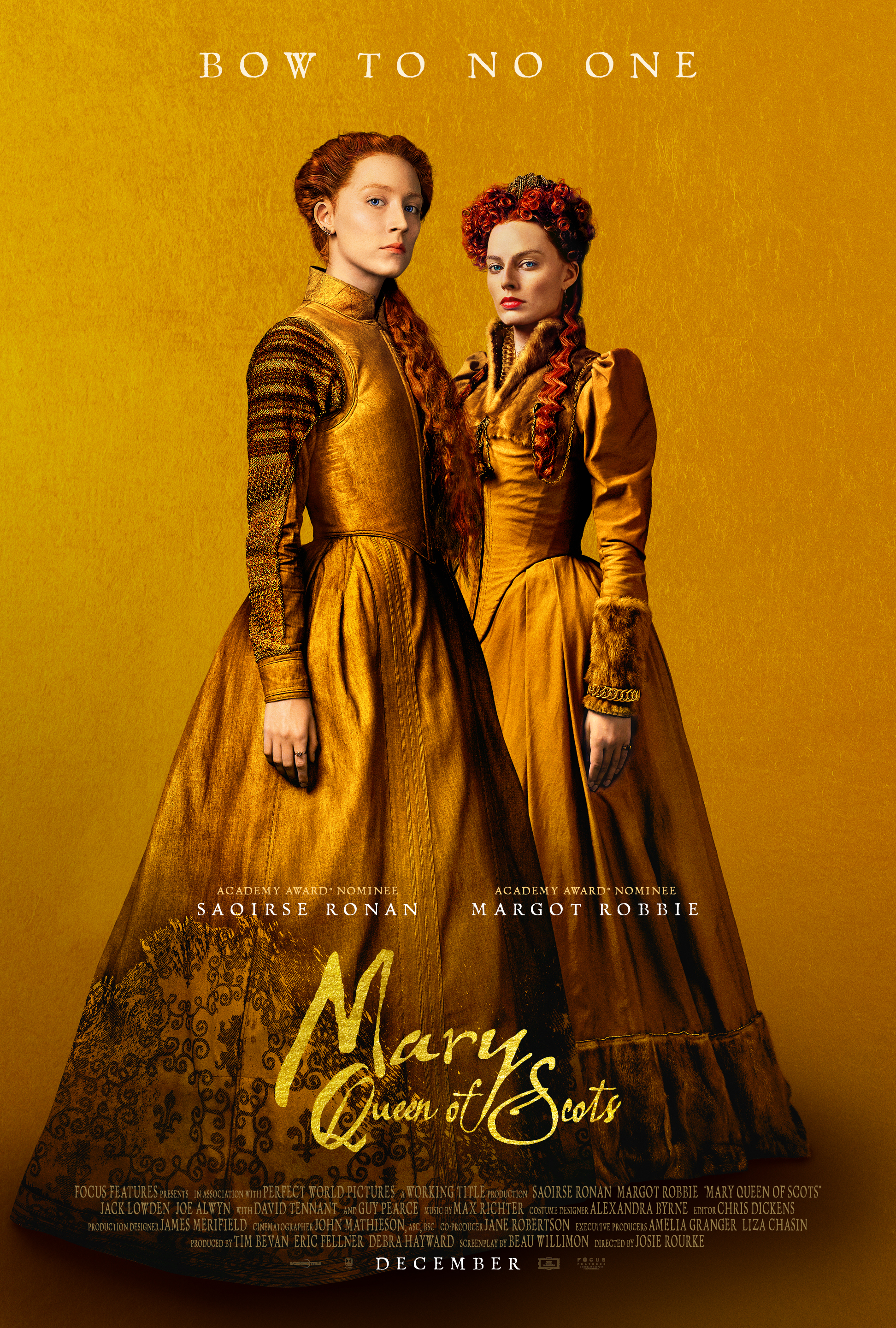Mary Queen of Scots
Mary Queen of Scots, 2018, 1 ½ stars
Queen of contrivance
Historical drama reeks of revisionism
Exclusive to MeierMovies, December 19, 2018
Mary, Mary, quite contrary, what does your movie show? Historical inaccuracies, an overstuffed story and a director not in the know.
Helmed by first-timer Josie Rourke and written by Beau Willimon of House of Cards fame, Mary Queen of Scots is based on John Guy’s book, Queen of Scots: The True Life of Mary Stuart. But don’t let the “true” trick you, as the movie is a somewhat invented account of the rivalry and supposed friendship between Mary and her cousin, Queen Elizabeth I of England.
Set in the late 16th century in both Scotland and England, the film focuses mostly on Mary and the political and personal intrigues that hastened her downfall. Featuring a fine performance by Saoirse Ronan as Mary and an almost equally memorable one by a practically unrecognizable Margot Robbie as Elizabeth, the movie addresses not just the turbulent history of the time, but also issues of misogyny, betrayal, infidelity and sexuality. But despite Alfred Hitchcock’s assertion that no elephants reside in the Scottish Highlands, there is indeed a giant elephant in Mary’s room: historical revisionism.
Spoiler alert: Historians agree that Mary and Elizabeth never met and were almost certainly not long-distance friends. While many of the film’s other details are accurate – such as the infamous murder of Italian courtier David Rizzio – Rourke and Willimon introduce elements that stretch believability and detract from the effective set, costume and makeup design.
Most striking is the use of black actors. While Moors and other people of color impacted Britain more than history and Hollywood have led us to believe, this film preposterously posits the notion that black men were fully accepted in positions of power alongside royalty. Instead, most were relegated to second-class status or exotic novelties worthy only of passing fascination. Turning a blind eye to these realities affords worthy opportunities to today’s actors of color, but it also promotes misguided revisionism that hinders the equality it intends to foster.
But this is obviously not a documentary, and these choices might be appreciated if the film were just plain better or made clear it was exploring alternate realities in the name of art and diversity. After all, Shakespeare took enormous factual liberties with his histories. But despite the movie’s ambitious scope, this is not Shakespeare. Indeed, Rourke seems to have little grasp of visual storytelling and has packed her production with too many characters, an intrusive score, uninspired editing and plots necessitating a class in Elizabethan history to understand. Yes, it’s nice to see Guy Pearce, David Tennant and Brendan Coyle (Mr. Bates from Downton Abbey), but like the other supporting actors, they become lost in an unexceptional, plodding, confusing and contrived narrative.
At the climax, we get a glimpse of how good the movie might have been when we witness a mysterious and beautifully choreographed rendezvous between major characters. It’s a scene that would have worked well on the stage of London’s Donmar Warehouse, where Rourke has served for eight years as artistic director. And that’s exactly where this experiment should have been realized, for it’s an ill fit for the screen.
© 2018 MeierMovies, LLC
For more information on this movie, visit IMDB and Wikipedia.
